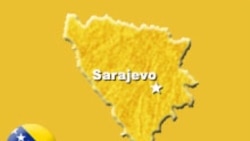It is thus no surprise that Austrian and German historians since 1914 have generally regarded Princip as a terrorist who mercilessly killed the heir to the throne and his wife, a young mother. Such historians tend to regard the period of Austro-Hungarian rule in Bosnia (1878-1918) in a positive light, stressing the material, economic, and administrative progress it brought to what had been an Ottoman backwater.
Conversely, many Serbs have regarded Princip as a national hero who killed an archduke symbolizing the foreign occupation of Bosnia, which those Serbs feel should be part of a Greater Serbia. To them, Franz Ferdinand added insult to injury by being in Sarajevo on 28 June, which is St. Vitus Day or Vidovdan, the most important date in the Serbian historical calendar and the anniversary of the Battle of Kosovo Polje in 1389.
In communist Yugoslavia after 1945, Princip's Mlada Bosna (Young Bosnia) organization was lionized as Yugoslav rather than purely Serbian in nature, partly because its ranks included some Bosnian Muslims, even if they chose to call themselves Serbs (many Muslims of that day identified themselves politically as Serbs or Croats). Princip's purported footprints were set in cement in the pavement where he is believed to have stood when he pulled the trigger. A Mlada Bosna Museum was opened in the neighboring building. The official interpretation was that Princip and Mlada Bosna helped speed the creation of a united Yugoslav state, a project that was allegedly supported by the leading political forces in Serbia, Croatia, and Slovenia as well.
Many questioned this view. Professor Charles Jelavich of Indiana University argued that Serbia's goal -- and that of Mlada Bosna -- was to establish a Serbian national state on the model of the other nation-states formed in 19th-century Europe. The Yugoslav idea, Jelavich notes, was created and promoted primarily -- if not exclusively -- by Croats to put an end to their people's division between the Austrian and Hungarian halves of the monarchy and increase their political weight in the region (see "RFE/RL Balkan Report," 14 February 2003). And even among Croats, Yugoslavism, as it was known, competed with one movement seeking to create a large Croatian unit (including Bosnia) within the Habsburg monarchy and another movement favoring the establishment of a Croatian national state (also including Bosnia).
For his part, Sehic in the RFE/RL program stressed that Mlada Bosna sought to establish a Greater Serbia rather than a multiethnic Yugoslavia. He argues that Princip was a terrorist, adding that this view has come to be embraced by many Bosnian Croats and Muslims following the breakup of former Yugoslavia and the wars that accompanied it. If Princip was a hero to those enamored of the Yugoslav idea in the 20th century, he was a terrorist to those who subsequently grew disillusioned with Yugoslavia or never accepted that state to begin with, Sehic believes.
Markovic concedes a sentimental admiration for Princip's heroism, noting that assassination was a favored tool of European revolutionaries of that era. Markovic nonetheless emphasizes that the young man was a tragic figure. Princip's actions led not only to his own death in prison but to the destruction of an entire generation on the battlefields of World War I. On a deeper level, Markovic asks whether any violent, allegedly heroic act can be worthy of respect, be it in Bosnia in 1914 or 1992-95, or in Afghanistan or Iraq in 2004.
Markovic denies the theory long put forward by many Austrian and German historians that Serbs or Serbia were responsible for World War I. He argues that Princip's gunshots simply set off a tragic series of events that had long been in the making and was simply waiting for the right catalyst to set it in motion.
In 1914, Markovic continues, Serbia had just emerged from the Balkan Wars of 1912-13, in which it lost 50,000 people. Consequently, "no sensible [Serbian] politician" (as opposed to the extremist circles in the army behind Mlada Bosna) sought a conflict with Austria-Hungary. Because Princip's "fanaticism" unleashed yet further suffering for the Serbs at that particular moment in their history, the young man was a tragic figure as far as the fate of his own people was concerned.
And what of the future? Sehic feels that history has passed its verdict on Princip as a terrorist. Markovic is not so sure, arguing that the young man's deed must be seen in its historical context and that it would be wrong to say that the demise of former Yugoslavia discredited him and Mlada Bosna forever. Instead, Markovic calls for more scholarly research, unfettered by political considerations.
On a more concrete level, Sehic notes that there are efforts under way in Bosnia to return a monument to Franz Ferdinand to the public place in Sarajevo where it stood from 1917 to 1919. He does not say so specifically, but this campaign is part of a post-1992 tendency among many Bosnian Muslims and Croats in particular to look back at the Austro-Hungarian period from 1878-1918 as a golden, progressive age when the best benefits of European civilization of the day came to Bosnia, including a fairly honest administration and modern public works.
Another issue is what to do about the now decrepit building that was formerly the Mlada Bosna Museum. Princip's cement footprints are long gone, as is the heroic relief of patriotic young people on one side of the building. Should it be reopened as a museum devoted to the Austro-Hungarian period in Bosnian history? Or as a museum dealing with Mlada Bosna and other aspects of the origins of World War I, but in a much more balanced way than was the case with the communist-era museum? And what about the former museum of contemporary history near the university, which stands as an empty shell?











